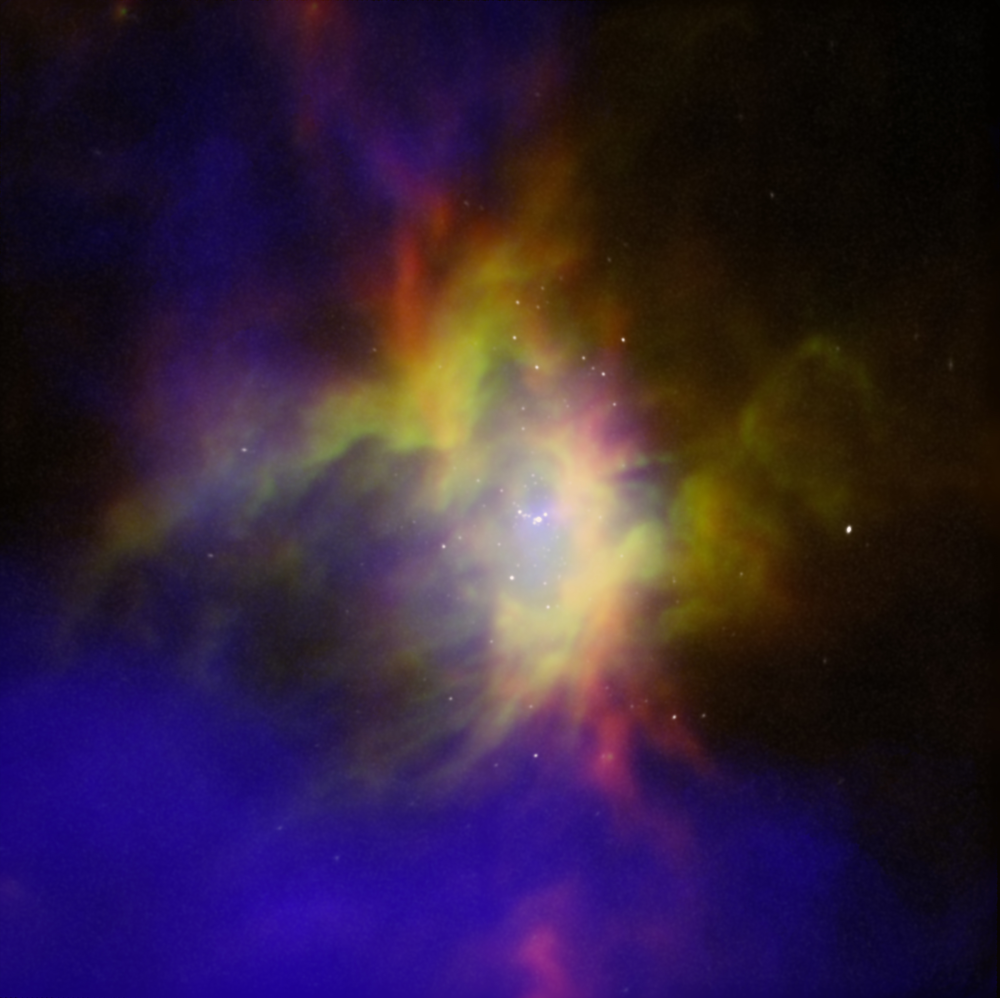Galactic Order | How Massive Stars Regulate Their Own Birth | Exploring the Astonishing Mechanisms That Keep Star Formation in Check Across the Universe
 New observations of a stellar nursery have highlighted a self-regulation mechanism that resolves discrepancies between simulated and observed efficiencies of star formation. The process of star formation in interstellar clouds of gas and dust is influenced by young, massive stars that inject energy into their surroundings.
New observations of a stellar nursery have highlighted a self-regulation mechanism that resolves discrepancies between simulated and observed efficiencies of star formation. The process of star formation in interstellar clouds of gas and dust is influenced by young, massive stars that inject energy into their surroundings.
This energy can disrupt star formation by tearing apart the surrounding medium, but it can also encourage it by gathering dense gas shells that are prone to gravitational collapse. New observations suggest that this stellar feedback significantly suppresses star formation. This finding provides valuable insight into why proposed rapid star-formation rates have long been inconsistent with observations. The formation of high-mass stars is associated with the gravitational collapse of the surrounding cloud of molecular gas.
This collapse leads to a high concentration of material, which should induce further star formation. However, the expected high star-formation rates are not observed, with typically only a few percent of the molecular cloud’s mass becoming new stars. This could be because stellar feedback disperses the collapsing molecular cloud on the same timescale that new stars form.
Key Takeaways:
- New observations suggest that the formation of massive stars in interstellar clouds of gas and dust is self-regulating, resolving discrepancies between simulated and observed star formation efficiencies.
- Stellar feedback, the energy injected into their surroundings by young, massive stars, significantly suppresses star formation, preventing the high star-formation rates previously proposed.
- Data from NASA’s Stratospheric Observatory for Infrared Astronomy and the Chandra X-ray Observatory have allowed researchers to track this self-regulation process in real-time, providing a consistent framework to understand high-mass-star formation in galaxies.
“Young, massive stars inject energy into their surroundings in a way that both disrupts star formation by shredding the surrounding medium and encourages it by collecting dense gas shells that are prone to gravitational collapse. Which of these feedback processes dominates has been unclear, but new observations by Lars Bonne of NASA’s Ames Research Center and his colleagues suggest that stellar feedback significantly suppresses star formation.”
More details: here

Leave a Reply